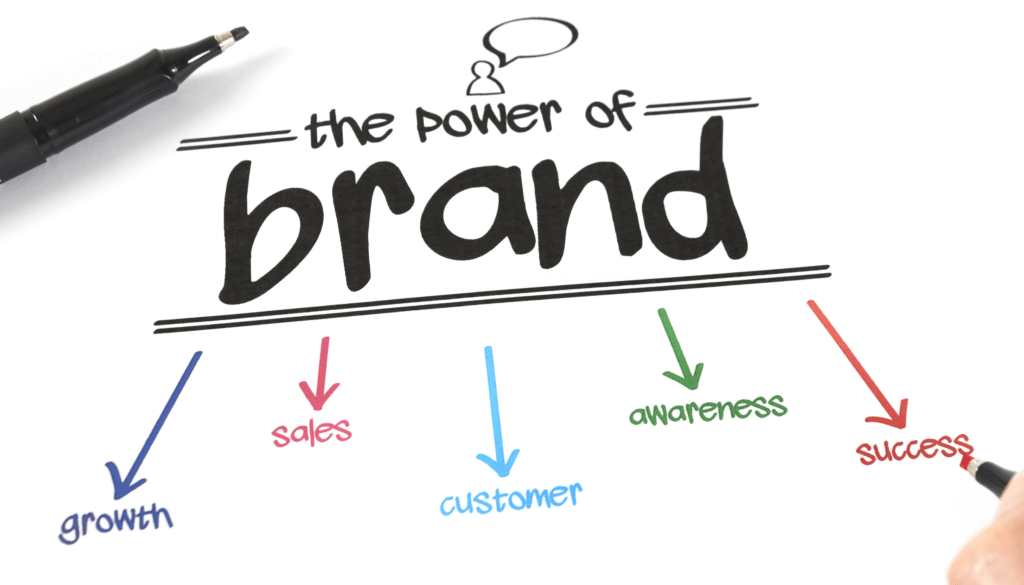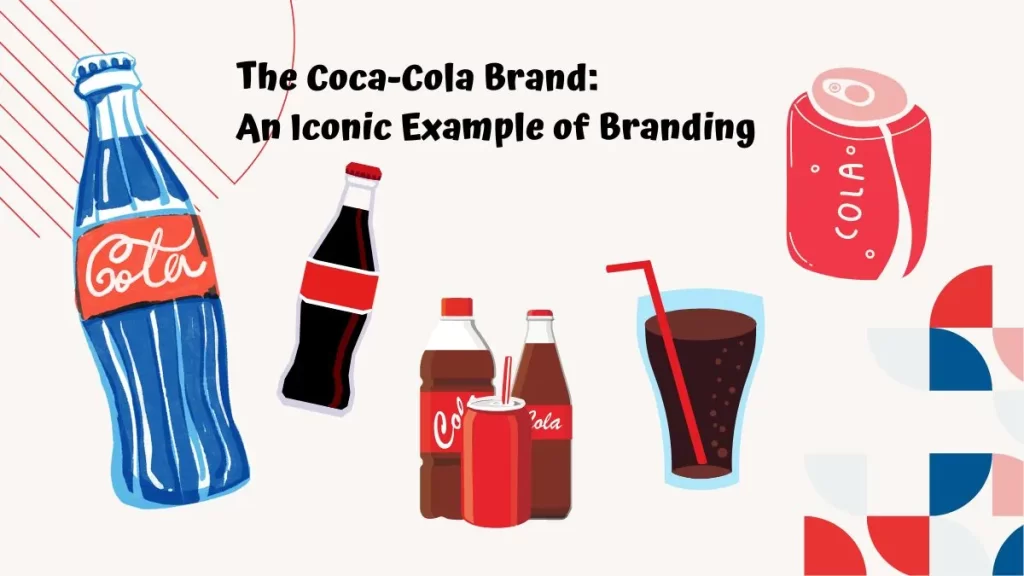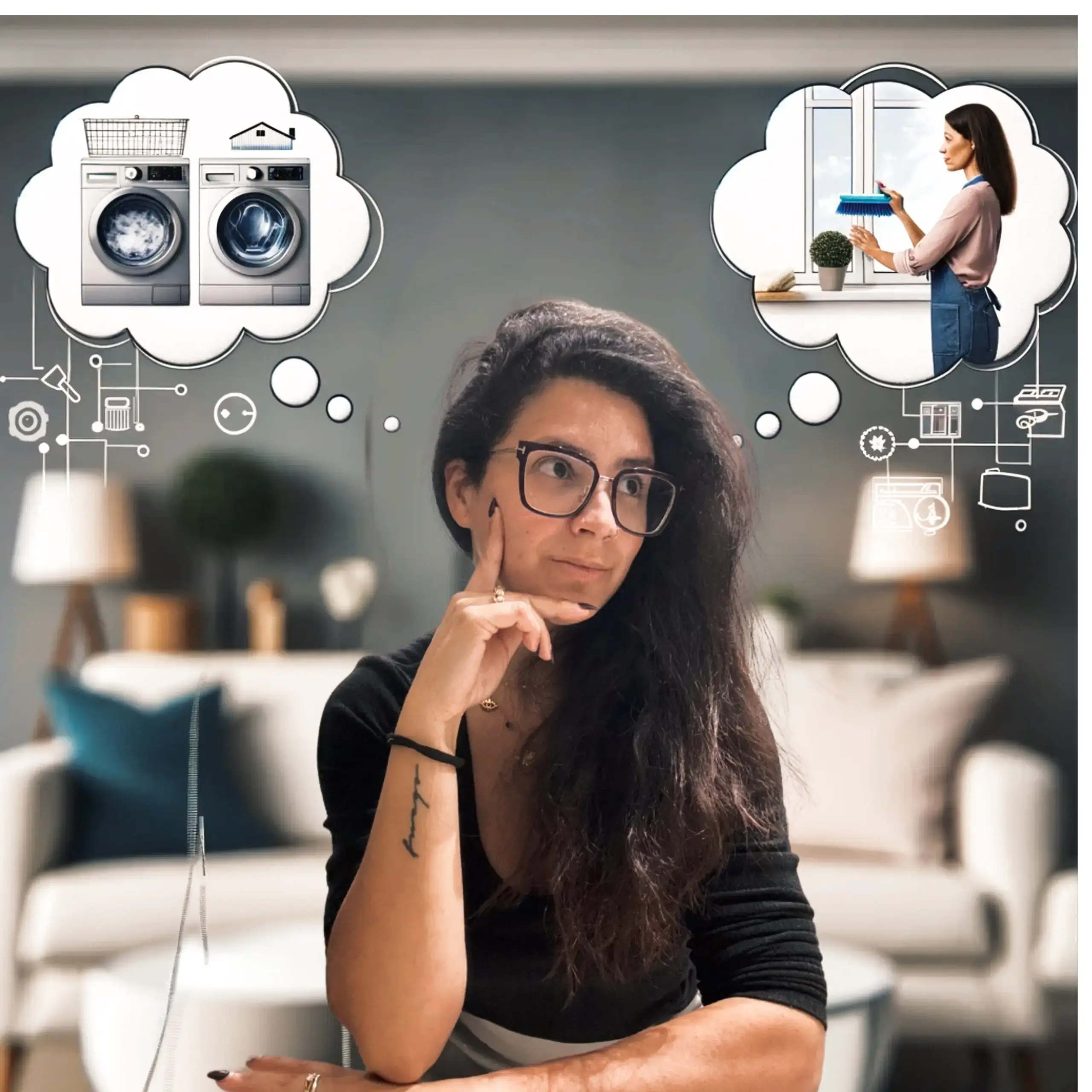Crafting Your Brand: Building an Unforgettable Online Presence

Introduction: Focusing on the Design Aspect of Branding
Branding is the heartbeat of any business. It’s more than just a logo or a tagline; it’s the story you tell, the emotions you evoke, and the way you connect with your audience. In today’s crowded marketplace, a strong brand isn’t just important, it’s crucial. But what does it really mean to build a brand? And how do you do it in a way that resonates deeply with your audience?
This post focuses on the design aspect of branding. How to create a visual identity that truly represents your business and appeals to your target audience. Whether you’re a seasoned entrepreneur or just starting out, understanding the visual elements of branding is essential. But don’t worry, we’ll also dive into the online presence and strategy side in our next post, so you’ll get the full picture of building a brand that lasts.
A strong brand can transform a simple business into a memorable experience. It’s what makes customers come back and what sets you apart from the competition. So, let’s explore how you can create a brand that not only stands out but also sticks in the minds of those who encounter it.
The Essence of Personal Branding: Lessons from Oprah Winfrey

When you think of powerful personal brands, Oprah Winfrey is probably one of the first names that comes to mind. Oprah has built an empire based on authenticity, empathy, and a genuine connection with her audience. But her brand isn’t just about her media presence; it’s about the story she tells, a story of overcoming obstacles, believing in oneself, and the transformative power of storytelling .
Oprah’s brand is globally recognised and trusted because it consistently embodies these values. It’s this trust that has allowed her to expand her brand into various ventures, from book clubs to wellness tours, each one reflecting her core values. But how did Oprah build such a strong personal brand?
It all comes down to being true to who she is and consistently communicating that to her audience. Oprah has never tried to be someone she’s not, and that authenticity shines through in everything she does. For entrepreneurs, the lesson here is clear: Be true to yourself and your mission. Authenticity and consistency are what build trust, and in today’s competitive marketplace, trust is everything .
Oprah’s journey also highlights the importance of using your platform for good. She has used her brand not just to build her empire, but to address social issues, promote education, and inspire millions of people around the world. Her brand is not just about her personality; it’s a tool for making a positive impact. This shows that strong branding can go beyond commercial success to achieve something much more meaningful ( more about Oprah’s story here )
The Power of Company Branding: Coca-Cola’s Global Success

Now, let’s shift gears and talk about company branding, with Coca-Cola as a prime example. Coca-Cola’s branding success is legendary, and for good reason. Founded in 1886, Coca-Cola has built a brand that’s synonymous with happiness, celebration, and refreshment. The company’s iconic red and white logo and the signature contour bottle are recognised worldwide. But what makes Coca-Cola’s branding so powerful?
Consistency is a major factor. Coca-Cola’s messaging has remained focused on the joy of sharing a Coke with loved ones for over a century. This emotional connection has been reinforced through memorable advertising campaigns, such as the “Share a Coke” campaign, where the company personalised bottles with popular names. This simple yet effective campaign strengthened the bond between the brand and its customers by making the experience more personal .
Coca-Cola’s branding goes beyond just its logo and advertising. The company has successfully associated its brand with positive experiences and memories, making it a staple in celebrations and everyday life. This consistent and emotional branding has allowed Coca-Cola to maintain its position as a leader in the beverage industry for over a century ( more about the brand Here ).
The takeaway for entrepreneurs here is the power of emotional branding. By creating positive associations with your brand and consistently reinforcing them, you can build a brand that not only stands out but also endures over time.
Start with Research: Ensuring Originality in Your Branding
Before diving into your branding design, it’s crucial to conduct thorough market and competitor research. This step ensures you’re not inadvertently using designs, logos, or colour schemes that are already associated with other brands, helping you maintain originality and avoid legal issues.
For a quick and effective market analysis, AI tools can be incredibly helpful. To learn more about leveraging AI for efficient market research, check out my previous post.
Comprehensive Branding: The Devil’s in the Details
Building a brand that truly resonates with your audience is all about the details. While the big picture; your logo, your tagline, your brand colours, is important, it’s the finer details that really bring your brand to life.
Let’s break down the key elements of comprehensive branding:
1. Creating a Mood Board
Before you dive into the actual design work, it’s helpful to create a mood board. A mood board is a visual tool that gathers all your inspiration in one place; colours, typography, images, and textures that represent the look and feel you want for your brand. It’s like a scrapbook for your brand’s identity.
A mood board helps you visualise how different elements will work together, ensuring that everything is cohesive and aligned with your brand’s values. Whether you’re working with a designer or creating your brand indentity yourself, a mood board is an essential first step .
2. Developing Brand Assets
Once you’ve established your mood board, it’s time to develop your brand assets. These are the visual elements that will represent your brand across all channels; your logo, colour scheme, typography, and imagery. Each of these elements should be consistent and reflect the identity you want to project .
Your logo is the cornerstone of your brand’s visual identity. It should be simple, memorable, and versatile enough to work across different mediums. Your colour scheme should evoke the right emotions and complement your logo. Typography, too, plays a crucial role in how your brand is perceived. The fonts you choose should be legible, appropriate for your industry, and consistent across all your materials.

3. Crafting Mockups
Before you roll out your brand, it’s important to see how it will look in the real world. This is where mockups come in. Mockups are essentially prototypes that show how your brand elements: logos, colours, typography, will appear on different materials, such as business cards, websites, or product packaging.
Creating mockups allows you to refine your designs and ensure that everything looks cohesive before you launch. It’s a crucial step in the branding process because it helps you catch any inconsistencies or design flaws before they reach your audience.
4. Telling Your Brand Story
Your brand story is the narrative that explains who you are, what you do, and why you do it. It’s more than just a mission statement; it’s the essence of your brand, and it should be woven into every piece of content you create. A compelling brand story connects with your audience on an emotional level, making your brand memorable and relatable.
Your brand story should highlight your values, your journey, and what sets you apart from the competition. It’s what gives your brand personality and depth, turning a simple business into something that people care about.
10 AI Tools to Elevate Your Branding Efforts
Creating a strong brand involves a blend of creativity, strategy, and the right tools. Here are 10 AI-powered tools that can help you build a compelling and cohesive brand identity:
1. ChatGPT: Your AI-Powered Idea Generator
When it comes to brainstorming, ChatGPT is your go-to tool. Whether you need a catchy tagline, a brand name, or a fresh creative direction, ChatGPT helps you explore different ideas and build a strong foundation for your brand. It’s like having a brainstorming partner who’s always ready to help.
For instance, if you’re stuck trying to come up with a tagline for a sustainable fashion brand, you can prompt ChatGPT with something like, "Help me brainstorm a catchy tagline for a sustainable fashion brand that emphasises eco-friendly materials and ethical production." ChatGPT will generate ideas that you can refine and build upon.
ChatGPT isn’t just for taglines and brand names; it can also help you develop your brand’s tone of voice, brainstorm content ideas, and even suggest colour palettes that align with your brand’s values .
2. Looka: Crafting the Perfect Logo
Your logo is the face of your brand, and Looka makes it easy to get it just right. Looka uses AI to generate logo designs tailored to your brand’s name, industry, and style preferences. It’s like having a graphic designer at your fingertips, but without the hefty price tag.
Here’s how it works: You start by entering your brand’s name and industry, then select your preferred design style, colours, and icons. Looka generates a variety of logo options based on your inputs, which you can then customise further to fit your brand’s identity.
The beauty of Looka is that it makes professional logo design accessible to everyone, regardless of design experience. Plus, once you’ve created your logo, Looka also offers matching business cards, social media profiles, and other brand assets, ensuring that your visual identity is consistent across all platforms .

3. Canva: Simplifying Design for Everyone
Canva is a game-changer when it comes to maintaining consistency across your branding materials. With its wide range of templates and easy-to-use design tools, Canva allows you to create everything from social media posts to business cards that align with your brand’s visual identity.
One of the best things about Canva is that it’s incredibly user-friendly, even if you have no design experience. You can choose from thousands of templates, customise them with your brand’s colours, fonts, and logos, and then save and reuse your designs for future projects. This not only saves time but also ensures that everything you create looks polished and professional.
In addition, Canva is powered with advanced AI features that make design even more accessible. You can remove backgrounds, extend images, or remove elements seamlessly, all within the platform. Canva’s recent partnership with Leonardo.ai further enhances its capabilities, allowing for the creation of custom elements, images, and graphics tailored to your brand’s identity. Canva is truly a comprehensive tool that I recommend every entrepreneur to have in their branding toolkit.
Cost: Free version available; premium starts at £9.99/month.
4. Lumen5: Bringing Your Brand to Life with Engaging Videos
In today’s digital landscape, video content is crucial for engaging with your audience. Lumen5 is an AI-powered platform that turns your text-based content into visually engaging videos. Whether you’re repurposing a blog post or creating an explainer video for social media, Lumen5 makes the process straightforward.
Here’s how it works: You input your text content, and Lumen5’s AI matches it with relevant visuals, music, and animations to create a video that aligns with your brand. You can customise the video further by adding your brand’s colours, fonts, and logo, ensuring consistency across all your marketing materials.
Lumen5 is perfect for those who want to add a dynamic element to their branding without needing advanced video editing skills. It’s particularly useful for creating brand videos, social media content, and promotional materials that capture your audience’s attention.
Cost: Free version available; premium starts at £49/month.
5. Notion: Organising Your Brand Assets
Notion is where your brand comes together. It’s an all-in-one workspace where you can keep everything organised from logos to colour palettes and brand guidelines. I use Notion to keep all my branding elements in one place, neatly organised and easy to access. It’s perfect for ensuring consistency across all marketing efforts.
For example, you can create a dedicated page in Notion for your brand, where you store all your logos, colour schemes, and typography choices. This way, when you’re working on a new marketing campaign or designing a new product, you can easily refer back to your branding guidelines to ensure everything stays consistent.
Notion also allows you to keep track of your brand’s evolution, storing past versions of logos or colour schemes so you can see how your brand has developed over time. This is particularly useful if you’re working with a team, as everyone can access the same resources and ensure they’re using the correct branding elements. ( More about Notion visit my previous post here )
Cost: Free with paid plans starting at £4/month.
6. Adobe Firefly: Next-Generation Design Assistance
Adobe Firefly is a generative AI tool that helps you create stunning visuals for your brand, from logos to social media posts.
Adobe Firefly leverages AI to bring your creative ideas to life. It’s particularly powerful for generating custom graphics, enhancing images, and exploring creative possibilities that you might not have considered. For branding, it offers advanced features like text-to-image generation, style transfer, and more.
Here’s how it works: Start with an idea. Whether it’s a logo, an ad, or a social media post. Input your creative idea into Adobe Firefly, and let the AI generate multiple variations of your concept. You can then customise these designs to fit your brand’s identity.
Cost: Included with Adobe Creative Cloud plans.
7. DALL-E 3: AI-Generated Imagery ( In ChatGPT)
DALL-E 3, developed by OpenAI, is an AI model that creates images from textual descriptions, allowing you to generate custom visuals for your branding.
DALL-E 3 is perfect for creating unique, brand-specific imagery that stands out. Whether you need a custom illustration, product mockup, or abstract art for your branding materials, DALL-E 3 can bring your vision to life in a way that’s tailored to your exact needs.
Here’s how it works: Describe your vision in detail, input the description into DALL-E 3, and the AI will generate a set of images based on your input. These images can be customised further to match your brand’s style and identity.
Cost: Access through OpenAI’s API, pricing varies based on usage.
8. MidJourney: Artistic AI-Generated Visuals
MidJourney is an AI tool that specialises in creating artistic and stylistic images based on textual prompts, ideal for unique brand visuals.
If your brand leans toward the artistic or abstract, MidJourney is a fantastic tool for generating visually stunning imagery. Whether you’re creating album covers, promotional art, or unique social media content, MidJourney offers a level of creativity and originality that can set your brand apart.
Here’s how it works: Enter a creative prompt that describes the style and elements you want in your image, and MidJourney will generate several variations based on your input. You can then select and refine the image that best fits your brand’s aesthetic.
Cost: Access through Discord, subscription plans start at $10/month.
9. Leonardo.AI: Next-Gen Image Creation
Leonardo.AI is a cutting-edge image creation tool that has recently partnered with Canva to enhance image and graphic creation capabilities.
Leonardo.AI enables you to create custom images, graphics, and design elements tailored to your brand. Whether you’re designing a new product line, creating marketing materials, or just looking for fresh visual content, Leonardo.AI’s integration with Canva makes it easier than ever to produce high-quality visuals that align with your brand.
Here’s how it works: Access Leonardo.AI through Canva to create and customise images directly within your design projects. Generate unique design elements that enhance your brand’s visual identity.
Cost: Free version available; premium plans vary.
10. Khroma: AI-Powered Colour Palette Generator
Khroma uses AI to generate colour palettes tailored to your brand’s personality, making it easier to create a cohesive and appealing visual identity.
Colours play a significant role in branding, influencing how your audience perceives your brand. Khroma helps you create colour palettes that resonate with your brand’s personality, ensuring that your visuals are both aesthetically pleasing and emotionally impactful.
Here’s how it works: Start by selecting a few colours that resonate with you or your brand. Khroma then uses your preferences to generate a variety of palettes that work well together. You can apply these palettes across your branding materials to maintain a consistent and appealing visual identity.
Cost: Free to use.
Conclusion: Branding with AI, Your Path to a Memorable Online Presence
Branding isn’t just about slapping a logo on your website and calling it a day. It’s about creating a unique identity that resonates with your audience, telling your story in a way that connects with people. With AI tools like ChatGPT, Looka, Canva, Lumen5, Adobe Firefly, DALL-E 3, MidJourney, Leonardo.AI, and Khroma, you can streamline the branding process and build something truly special.
Your brand is a reflection of who you are and what you stand for. Investing time and effort into creating a cohesive brand builds lasting relationships with your customers and drives your business’s success.
Ready to start crafting your brand? I’d love to hear your thoughts and experiences; drop a comment below! And don’t forget to subscribe to our newsletter for more tips and insights. Plus, when you subscribe, you’ll receive our exclusive “ChatGPT Guide for busy mums“, a must-have resource for any mumpreneur looking to leverage AI in their business.
If you’re eager to take your brand to the next level, stay tuned for our next post, where we’ll dive into building a strong online presence and digital strategy. You won’t want to miss it!






